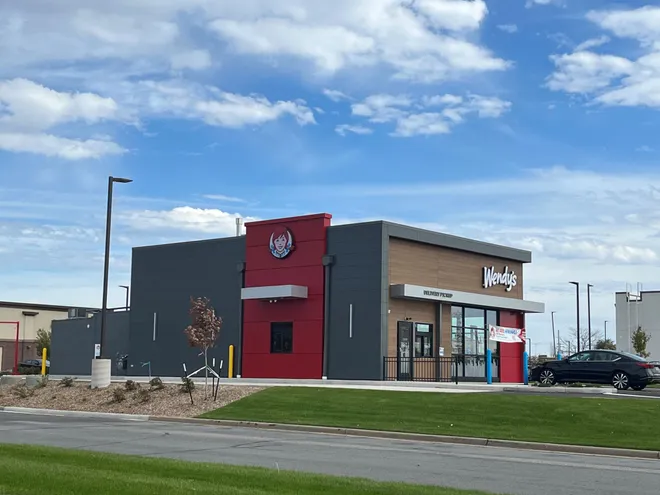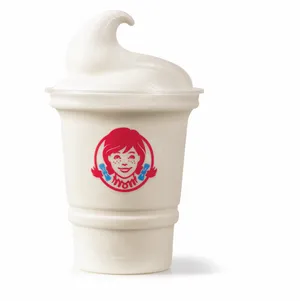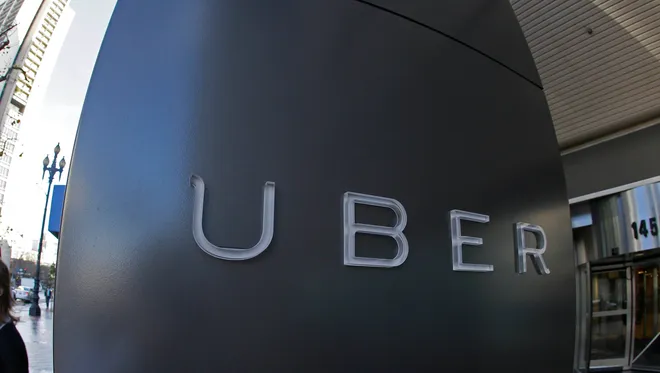Is Uber-style surge pricing coming to fast food? Wendy's latest move offers a clue.
Hit the bar during happy hour or your favorite restaurant for that early bird special and save money on drinks and food. Slash the cost of that Hawaiian or European vacation by booking a flight or a hotel room early or during the off-season.
But the same supply-and-demand principle can work against you. You pay more for electricity during peak hours, for Bruce Springsteen concert tickets or even a parking spot when there's a sporting event. And, of course, there’s the infamous Uber surge pricing.
While not new, surge pricing – or dynamic or variable pricing as it’s typically called in the business world – is fast becoming the norm.
What is surge pricing?
More fast-food joints, restaurant chains and brick-and-mortar retailers are taking advantage of technological advances to tap into real-time trends and swiftly adjust prices, sometimes in seconds.
It’s a tempting proposition for big businesses that can dramatically increase revenue with slight pricing changes.
Wendy’s is the latest to say it will fluctuate prices of chicken nuggets or a classic chocolate frosty based on demand.
Is shrinkflation on this rise?Paying more at the grocery store for less? Sen. Bob Casey takes aim at 'shrinkflation'

During a conference call earlier this month, Wendy’s CEO Kirk Tanner said the fast-food chain would experiment with dynamic pricing as early as next year.
Wendy's surge pricing
“Beginning as early as 2025, we will begin testing more enhanced features like dynamic pricing and daypart offerings, along with AI-enabled menu changes and suggestive selling,” he said. “As we continue to show the benefit of this technology in our company-operated restaurants, franchisee interest in digital menu boards should increase, further supporting sales and profit growth across the system.”
The response on social media has been mixed.
“If I ate at Wendy’s, I’d sit in the drive thru waiting for the surge pricing period to end,” commented one consumer on the social media platform Threads.
Not everyone is mad at Wendy’s. “Lots of other businesses adjust prices based on demand,” commented another.

What’s clear: The days of fixed prices that began in 1876 when a Quaker merchant introduced price tags at his department store in Philadelphia may soon be behind us.
Research and advisory firm Gartner predicts that by 2025, the top 10 global retailers will use dynamic pricing to take advantage of mismatches between supply and demand.
Prices seesaw all the time on the sites of online retailers like Amazon that use algorithms and artificial intelligence to monitor competitors and glean insights into individual shoppers, adjusting prices depending on interest in the product or in the brand, said Timothy Webb, an assistant professor at the University of Delaware’s hospitality and sport business management program.

Coupons and other offers are also routinely dangled in mobile apps to encourage people to make purchases.
“A lot of this stuff is already happening even if you don’t realize that it is happening. If you have the Starbucks app and I have the Starbucks app, we probably have different offers,” Webb said. “We might not be in the drive-through and they just increased the prices, but we are already paying different prices for the same products.”
But, he says, Wendy’s fans will likely see moderate, not massive, price swings during periods of peak demand.
“It’s not like $200 or $300 on a flight. This is a hypercompetitive industry. If Wendy’s goes up $2 to $3 on a burger at dinner time, I would be shocked. People have too many options. They will just walk down the street and eat at Burger King instead,” Webb said. “There will just be little price changes here.”
While consumers have been accustomed to hotels and airlines modulating prices depending on demand since the 1980s, they tend to view sharp pricing increases as predatory.
“Consumers, by and large, understand that companies need to make a profit. But, when a company appears to be sticking it to a consumer in a moment of need, the customer resents it,” said John Dinsmore, a marketing professor at Wright State University in Dayton, Ohio, who researches dynamic pricing.
Some 52% of consumers surveyed by software company Capterra last year said dynamic pricing in restaurants is the equivalent of price gouging.
A good example is Coca-Cola, according to Dinsmore. “Around the turn of the century, they experimented with vending machines that raised the cost of drinks based on the outside temperature. The hotter the weather, the more expensive the soda. Consumers hated it. They understandably felt exploited. It violated consumers’ sense of price fairness,” he said. “I think you are going to see a similar response to Wendy’s dynamic pricing.”
Dynamic pricing aims to influence consumer behavior − and price-sensitive consumers can work the system, Webb said.
“If you are trying to save a couple bucks, it’s worthwhile seeing if you go to Wendy’s at 4, you are going to save a little bit of money,” he said. “There will be opportunities to find deals and pricing that are beneficial to you.”
People who study dynamic pricing say it won't work in all facets of American life.
"Dynamic pricing is here to stay but I believe only in certain contexts. Surge or dynamic pricing works for Uber because they are often the only option," Dinsmore said. "For consumer staples like food and clothing, I have a hard time seeing it take hold. There are too many options. Consumers will adjust and competitors will undercut prices."
Disclaimer: The copyright of this article belongs to the original author. Reposting this article is solely for the purpose of information dissemination and does not constitute any investment advice. If there is any infringement, please contact us immediately. We will make corrections or deletions as necessary. Thank you.







